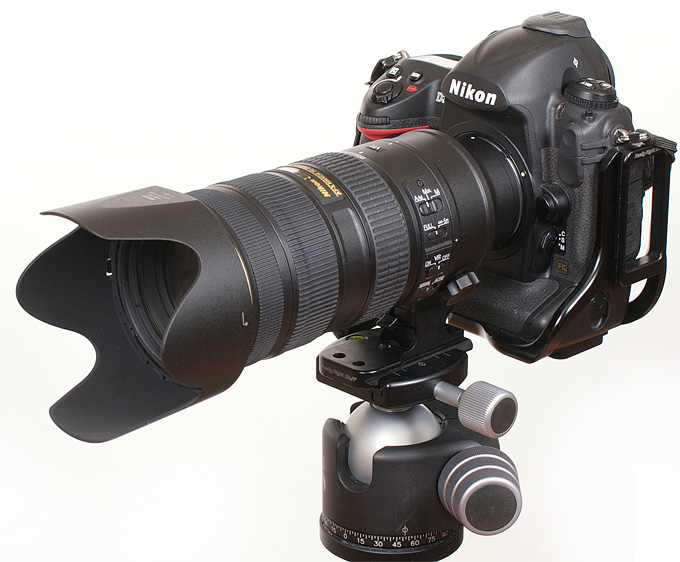|
Page 1 of 3

Review by Markus Stamm, published April 2010
Introduction
The Nikkor AF-S 70-200mm f/2.8 VR, Nikon's first stabilized fast tele zoom, was a highly regarded lens on DX cameras, but for many was lacking border sharpness at the tele end and suffering from rather high vignetting on FX cameras. These symptoms were probably a bit exaggerated in forum communities but, nonetheless, reason enough for many FX users to avoid this lens and wait for a successor instead.
Well, the wait is finally over - the new Nikkor AF-S 70-200/2.8 G ED VR II is here - so let's see how the lens performs on our FX test camera (Nikon D3x) and if Nikon managed to solve the mentioned issues.
|
Move the mouse cursor over the text marks below to see the lens with and without mounted hood
|
| With Hood |
Without Hood |
|

|
As one can expect from a professional grade lens the build quality is excellent. Most parts are made of metal alloy with a slight crinkle finish. The broad rubberized zoom and focus control rings feel very smooth. The overall length of the lens does not change during zooming or focusing. It is a G-type lens there is no aperture ring.
A tripod collar is part of the lens. Just like on its predecessor the collar itself is not removable (but visibly wider and a little more stable) but the tripod "foot" is. It's an easy procedure to remove or replace the supplied foot. There are several third party options available that feature an Arca-Swiss profiled foot and thus avoid the need to screw on a lens plate (for those who use tripod or monopod heads with Arca Swiss profile). The good news is that existing replacement feet for the older 70-200VR fit the new model, too.
Unfortunately this is not true for the supplied hood which is a new design with a different mount. It's shorter than on the previous model thus offering a little less protection. In addition Nikon went for a slightly curved shape. You will instantly notice this if you're the kind of photographer that occasionally rests a lens on the hood. If you try this with the 70-200 VR II, be prepared for a heart attack. :-)

Optically the lens is a quite complex design with no less than 7 ED elements as well as Nikon's Nano-Crystal coating which helps to reduce flare and ghosting.
The AF-S 70-200mm VR II features a current VR II module (Vibration Reduction) for which Nikon claims an efficiency of up to 4 f-stops (it seemed more like three stops in the field to us). The lens offers two VR modes - a "normal" mode for most situations inc. static scenes, object tracking as well as monopod shots whereas the 2nd "active" mode to compensate more pronounced vibrations (e.g. when shooting from a moving vehicle).
In addition to the VR controls there's also a switch to limit the AF range. The previous model featured some AF stop buttons at the front of the lens. Instead of extending their functionality (like on the high end tele primes) Nikon decided to remove all these these buttons.
Thanks to an IF (internal focusing) design the front element does not rotate so using a polarizer is no problem. Like all modern Nikkors it features a silent-wave (ultrasonic) AF motor providing extremely fast and near-silent AF operations as well as manual focus override at any time.
The lens is compatible to and retains AF with all current Nikon tele converters. This review initially does not contain measurements with TCs, but these will follow at a later date (including the new TC-20E III).
| Specifications |
|---|
| Optical construction | 21 elements in 16 groups inc. 7 ED elements and Nano Crystal Coating |
| Number of aperture blades | 9 (rounded) |
| min. focus distance | 1.4 m (max. magnification ratio 1:8.33) |
| Dimensions | 87 x 205.5 mm |
| Weight | 1540 g |
| Filter size | 77 mm (non-rotating) |
| Hood | Nikon HB-48 (bayonet mount with lock, supplied), petal-shaped |
| Other features | Lens provides distance (D) information. Tripod collar with removable foot. Vibration reduction (VR II). Dust and waterproof rubber sealing. |
|